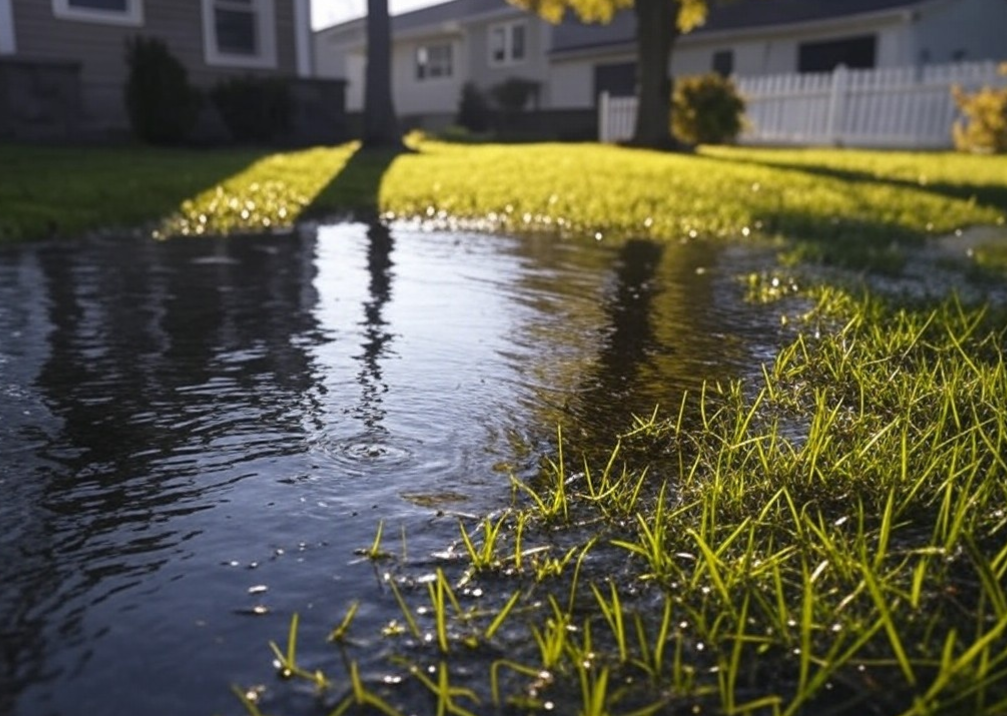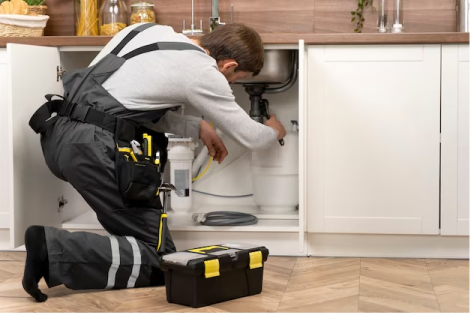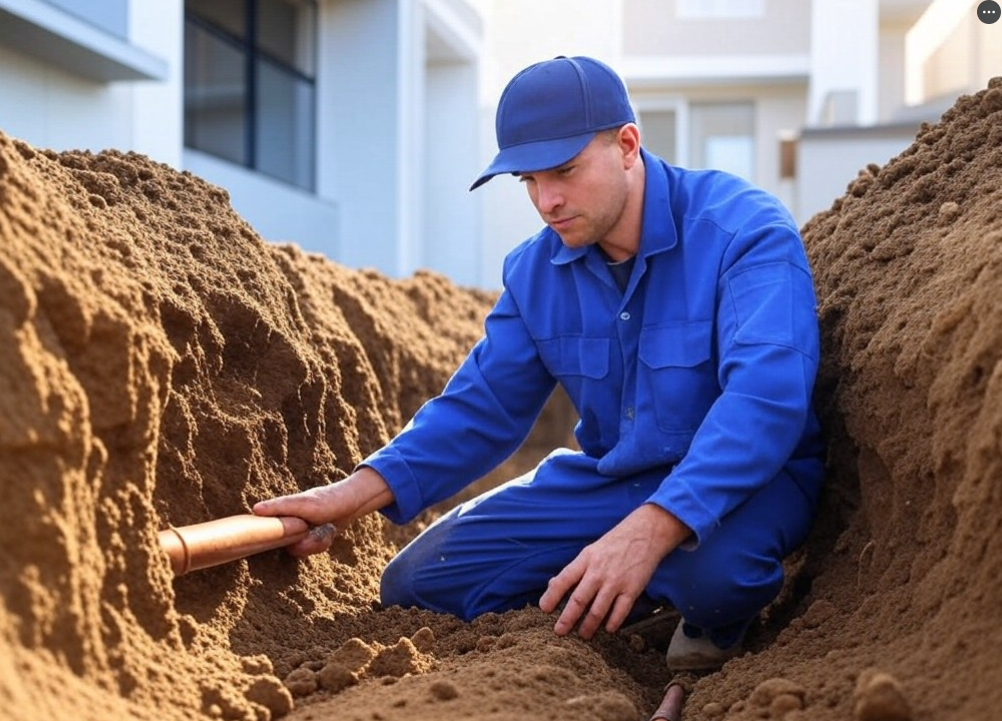Residential water line repair: Top 7 Expert Solutions
Residential water line repair is a common concern for homeowners dealing with plumbing issues. Understanding the basics can save you time and money. Here’s what you need to know right away:
- Identify the type of pipe: Lead, galvanized, or copper?
- Check the age of the water line: Older than 50 years may need replacement.
- Compare costs: Repairs can range from $3,000 to $5,000 while replacements might exceed this.
- Understand local codes: Not all materials can be repaired, especially lead or galvanized pipes.
Have you ever noticed a sudden drop in water pressure or unusual wet spots around your home? These could be signs of an underlying issue with your home’s water line. In older homes, or those with aging plumbing systems, water line problems can surface unexpectedly, causing headaches and hefty expenses. This is where understanding the intricacies of residential water line repair becomes crucial.
Before diving into any repair process, determining factors like the type and age of your existing water line can help guide your next steps. Sometimes a repair will suffice, but at other times, a full replacement is the safer, longer-lasting solution—especially if your property is subject to seasonal weather changes that could exacerbate line weaknesses, or if it fails to keep up with demand after home upgrades.
Service line protection programs can help manage unexpected repair costs. These programs offer guidance and support, making the financial aspect of homeownership less daunting.

Understanding Residential Water Line Repair
Water line breaks can be a significant headache for homeowners, leading to disruptions in daily life and costly repairs. Imagine waking up to a flooded basement or a sudden drop in water pressure. These are clear indicators that your water line may need some attention.
Water Line Breaks
Water lines can break due to several reasons, including aging infrastructure, corrosion, or extreme weather conditions. In older homes, pipes over 50 years old are especially susceptible. Lead and galvanized pipes, for instance, are not only outdated but also hazardous and often require complete replacement.
Repair Costs
Repairing a water line isn’t cheap. On average, you might spend between $3,000 and $5,000 for a repair, while a full replacement can cost even more. It’s crucial to get a written quote for both options to make an informed decision. Remember, the cheapest solution isn’t always the best. Sometimes, a replacement is more cost-effective in the long run, especially if the existing pipes are prone to frequent issues.
Repair Process
The repair process typically involves several steps:
- Identifying the Break: The first step is to locate the exact spot of the break. This might require professional help, especially if the break is underground or within walls.
- Excavation: If the break is underground, a section of the yard may need to be dug up to access the pipe.
- Pipe Replacement or Repair: Depending on the pipe’s condition and local plumbing codes, the broken section may be repaired or replaced entirely. Lead or galvanized pipes often need complete replacement due to health risks and code violations.
- Restoration: Once the repair is complete, any excavated areas are restored to their original condition.
Have you considered enrolling in a service line protection program? These programs can cover unexpected repair costs and offer peace of mind. With a small annual fee, you can safeguard yourself against the financial shock of sudden water line issues.
Understanding the intricacies of residential water line repair is essential for homeowners. Knowing what to expect, whether dealing with a minor leak or a major break, helps you manage the situation and avoid unnecessary stress.
Common Causes of Water Line Damage
Water lines, like any other part of your home, can suffer from wear and tear over time. Learning the causes of water line damage helps prevent costly repairs.
Weather Changes
Changes in the weather can wreak havoc on water lines. During winter, freezing temperatures can cause the water inside pipes to expand, leading to cracks or even bursts. Rapid temperature changes can also stress the pipes, making them more susceptible to damage. In areas like the Rio Grande Valley, where weather can be unpredictable, it’s important to insulate pipes and perform regular maintenance to prevent these issues.
Corrosion
Corrosion is a silent but deadly enemy of water lines, especially in older homes with metal pipes. Over time, pipes made from materials like iron or galvanized steel can rust, leading to leaks and potential water contamination. Factors such as acidic water or high mineral content can accelerate this corrosion process. If your home is older, it’s wise to have your pipes inspected regularly to catch corrosion early.
Age
The age of your water lines is a significant factor in their likelihood to fail. Most water lines are designed to last about 50 years, but this can vary based on the material used and the local environment. Lead pipes, for instance, are not only outdated but also pose health risks and are often mandated for replacement. Even copper pipes, though durable, can develop issues as they age. Knowing the age of your home’s plumbing system can help you decide when it’s time for an upgrade or replacement.

Being proactive about your home’s plumbing can save you from unexpected repairs and the stress that comes with them. Regular inspections, maintenance, and being aware of the common causes of water line damage can keep your water lines in top shape for years to come.
Steps to Repair a Broken Water Line
Fixing a broken water line involves a few key steps to make sure the repair lasts. Here’s a simple breakdown of the process:
Locate the Break
The first step in residential water line repair is identifying where the break or leak is occurring. This can be tricky, especially if the pipes are underground. Signs of a water line break include unexplained puddles in the yard, a sudden drop in water pressure, or an unusually high water bill. In some cases, professionals use specialized equipment like listening devices or infrared cameras to pinpoint the exact location of the break.
Excavation
Once the break is located, the next step is excavation. This involves digging to expose the damaged section of the pipe. It’s important to be cautious during this step to avoid damaging other utility lines. In urban areas with complex underground systems, this task requires precision and expertise. The extent of the excavation depends on the location and severity of the break. Sometimes, only a small section needs to be exposed, while other times, a larger area must be opened up.
Pipe Replacement
After excavation, the damaged section of the pipe needs to be replaced. The choice of replacement material is crucial and should comply with local plumbing codes. For instance, lead and galvanized pipes are often replaced with safer options like copper or PVC. The new pipe section is carefully installed, ensuring a tight seal to prevent future leaks. Once the replacement is complete, the area is backfilled, and the surface is restored to its original condition.

Repairing a broken water line is a job best left to professionals. It requires the right tools, expertise, and understanding of local regulations to ensure the repair is both effective and compliant. Promptly addressing water line issues helps prevent further damage and ensures a reliable water supply in your home.
Residential Water Line Repair Costs
Repairing a water line can be a significant expense, but understanding the costs involved can help you plan and make informed decisions. Let’s break down the average costs, labor, and materials involved in residential water line repair.
Average Costs
The cost to repair a water line can vary widely depending on factors like the location and severity of the damage. On average, homeowners can expect to pay between $3,000 and $5,000 for water line repairs. It’s crucial to get a written quote to understand the specific expenses for your situation, as costs might differ based on your area.
Labor Costs
Labor is a significant part of the repair cost. Professional plumbers typically charge between $45 and $200 per hour, depending on their expertise and the complexity of the job. For a straightforward repair, labor might take a few hours. However, if the job requires extensive excavation or replacement of a large pipe section, labor costs can increase significantly. Hiring licensed and experienced professionals ensures the job is done correctly and safely.
Material Costs
Repair materials significantly impact the overall cost. The choice of pipe material is crucial and must comply with local plumbing codes. Common materials include copper, PVC, and PEX. Each has its own cost considerations:
- Copper: Known for its durability, copper is more expensive but offers a long-lasting solution.
- PVC: A cost-effective option, PVC is often used for its affordability and ease of installation.
- PEX: Flexible and resistant to scale and chlorine, PEX is a popular choice for modern plumbing systems.
Material costs can range from a few hundred dollars to over a thousand, depending on the length and type of pipe needed.

While residential water line repair can be costly, understanding the breakdown of costs helps you prepare and make the best choices for your home. Whether it’s labor or materials, investing in quality ensures a reliable and long-lasting repair.
Frequently Asked Questions about Residential Water Line Repair
Does homeowners insurance cover water line repair?
Homeowners insurance often covers sudden and accidental water damage, such as a burst pipe. However, gradual issues or leaks due to poor maintenance are typically not covered. It’s crucial to review your policy to understand what is included. Some policies might require additional riders for specific coverage, like sewer backups. Always contact your insurance provider for detailed information about your coverage.
Are homeowners responsible for water lines?
Yes, homeowners are responsible for the water lines on their property. This includes the section of the line that runs from their home to the property boundary, where it connects to the city’s main line. If there’s a problem within this section, it’s up to the homeowner to handle repairs. This responsibility can lead to significant expenses, especially if the damage is extensive. It’s wise to be proactive about maintenance and consider protection plans that can help mitigate unexpected repair costs.
How much does it cost to repair a water line?
Repair costs for a water line can vary based on several factors, including the location of the break and the materials required for the repair. In Texas, for example, residential water line repair costs typically range between $3,000 and $5,000. Labor costs are a significant portion, with plumbers charging between $45 and $200 per hour. Material costs also add up, depending on whether you choose copper, PVC, or PEX pipes. Always get a detailed quote before proceeding with repairs to understand your specific expenses.
Conclusion
Integrity Services & Plumbing is the trusted choice for plumbing services in the Rio Grande Valley. With a family-owned approach, they offer reliable solutions for both homes and businesses.

Dealing with water line issues can be daunting, but service line protection can ease your worries. Programs like those from American Water Resources (AWR) offer homeowners peace of mind by covering unexpected repair costs. These plans are beneficial, as they protect against hefty expenses that come with water line repairs, which can range from $3,000 to $5,000.
When it comes to expert solutions, Integrity Services & Plumbing stands out with their commitment to quality and service. They understand the importance of maintaining your plumbing system and are equipped to address any water line issues promptly and effectively.
For more information on how Integrity Services & Plumbing can assist with your plumbing needs, visit their services page. Whether you need a quick fix or a comprehensive solution, their team is ready to help you keep your plumbing in top shape.

